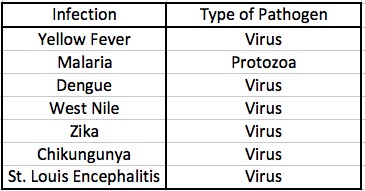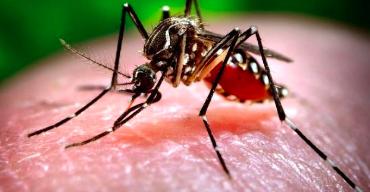Have you ever wondered why mosquito-transmitted infections were responsible for shutting down the first attempt to build the Panama Canal (rampant yellow fever) or are able to kill hundreds of thousands of children (malaria) each year in Africa, yet no one has ever been infected with HIV from a mosquito bite?
The answer lies in the nature of the mosquito, but even more so in the nature of HIV.
If you were around during the early days of AIDS, especially in the early 1980s, before the means of transmission was firmly established, AIDS was pure terror. People were worried about eating in restaurants in Greenwich Village, swimming in pools, and even having an infected kid in the same classroom with their children. Looking back it seems almost impossible that Ryan White, a 13-year old boy who contracted HIV from a blood transfusion in 1984, would not be allowed to return to his school in Indiana because of parents' fear. Even as late as the 1990s the fear remained.
In 1991 Lakers' star Magic Johnson revealed he had contracted HIV and immediately retired. But in 1992 Johnson came out of retirement to play in the NBA All-Star Game. During a mid-court tribute to Johnson, all the players walked onto the floor to hug him - one at a time. The expressions on many of their faces were unmistakable: "I don't want to hug this guy." Other players told reporters off the record that they didn't want to guard him during the game.
Thanks to a greater understanding of the means of infection and (more so) very effective drugs to treat it, the fear of becoming infected has diminished. But the term "fear" would not be even remotely adequate to describe what might have happened if the virus, which can be transmitted from a tiny needle stick, could also be transmitted by mosquitos. After all, when you swat one on a wall you often see blood - someone else's blood. It is certainly plausible that HIV could have been a blood-borne infection.
But we got "lucky." It quickly became clear that mosquitos were not a vector for HIV. Otherwise, we would have seen massive numbers of infections in disparate groups of people rather than in two primary groups - gay men and IV drug users.
Many other infectious diseases are spread by mosquitos (Table 1), and they are mighty nasty. With one exception all of them are viruses. So, why not HIV?

Table 1. Some pathogens that are transmitted by mosquitos
There are a number of reasons why HIV cannot be spread by mosquitos.
HIV is "homeless" inside a mosquito. The property that makes the virus so dangerous to people - an affinity for human T-cells (1) in the blood - also makes it an unhappy guest inside the mosquitos, which do not contain human T-cells. HIV acts by penetrating T-cells and "hiding" inside. In the absence of hiding places, HIV is exposed to and broken down by the enzymes found in the gut of the mosquito.
Just because HIV cannot grow inside mosquitos doesn't mean that other viruses cannot (2). Yellow fever and Dengue can replicate in the gut of the mosquito can then be passed on via the saliva. The same holds true for Plasmodium, the causative pathogen in malaria.
Mosquitos inject saliva when they bite. Living Plasmodium, as well as viruses that replicate in the mosquito gut, make their way from the gut to the salivary glands. This is how these infectious diseases are transmitted. Since the HIV particles are degraded in the gut they do not make their way to the saliva and cannot be transmitted.
Furthermore, HIV is not terribly contagious, especially when compared to other viruses like influenza, measles, and norovirus, which require very few viral particles to cause infection. So even if a minuscule number of viruses survived the innards of the mosquito there would not be enough virus to start the infection.
It may sound strange to think that the world got "lucky" with HIV, especially considering that 35 million people have died of AIDS. But it could have been much worse. Before Saquinavir, the first successful anti-HIV drug was approved in 1995, the death rate from AIDS was 100%. If mosquitos transmitted HIV, the 14-year period between when HIV was first identified and the approval of effective medicines could have easily been a scene from a post-apocalyptic horror movie.
So it is more than a little ironic that the reason that HIV is so deadly is the same reason that it didn't spread all over the world out of control. Viruses are seriously fascinating.
NOTES:
(1) T-cells are a type of white blood cells. They are responsible for fighting infections. HIV binds to a receptor called CD4, which is found on the surface of the T-cell. This is the beginning of the process of infection.
(2) Some viruses simply won't replicate outside of the body while some do easily. This drives virologists insane. For example, herpes and influenza can easily be grown in cultured cells in a dish while it is notoriously difficult to grow hepatitis C and norovirus. It is important to be able to have viruses growing in cells because then you can add a potential drug to see if it stops the replication. This is called a cell-based assay, and is the cornerstone of pharmaceutical research.




